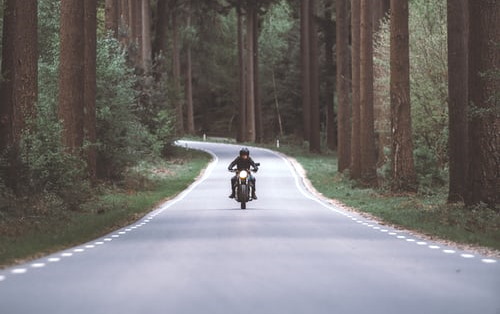6 Tips to Prepare for a Long-Distance Motorcycle Ride
- Written by Diana Smith

Going on a motorcycle ride can be a saving grace, even in these trying times. The thing is that your journey can help you relieve some stress and allow you to escape all the troubles in the world. Most importantly, if you do feel the need to go someplace, picking a means of public transportation can be quite risky. Therefore, a personal ride, especially a personal ride for a single person (like a motorcycle), may sound like a winning combination. Here are six tips to help you prepare for a long-distance motorcycle ride.
1.Dress for the occasion
If you’re going on your first long-distance ride, you may be unfamiliar with the expected driving temperature. Moreover, the temperature on the open road is not the same as the one that you can expect during the urban commute. On a long-distance trip, some days are going to be hotter or colder than others. This is why even the best apparel needs to have an alternative. Overall, you need to dress for the occasion. We’re talking, of course, about motorcycle protective gear but also additional layers of clothing to keep you warm.
2.Start early and end early
Time-management is key for your long-distance journey. First of all, you need to give yourself time to prepare everything for the voyage. You need to travel long distances, which is why a minor setback can cause a massive problem later on. While on the trip, it’s quite easy to lose sight of the departure and arrival times. So, when planning your daily schedule, it’s always better to head out a bit earlier than you normally would and arrive at a target destination slightly ahead of schedule.
3.Check the vehicle
Another thing worth mentioning is the importance of checking the vehicle before heading out. Every motorcycle comes with an owner’s manual. Here you can find all the information about the fluids, maintenance, and potential service of your vehicles. If you’ve lost or misplaced yours, it might be a good idea to look it up online. The manufacturer probably has a digital version that you can download. Also, you could take the motorcycle to a veteran mechanic to look it up. This is the most reliable but also the costliest method. For your journey, nonetheless, safety is paramount.
4.Bring additional baggage
Bringing additional baggage on a journey is not optional. Sure, some may dislike the visuals of having extra bags on your vehicle, but pragmatism always comes first. Other than this, keep in mind that it all comes down to the way in which you manage to combine these bags. For instance, you can buy a motorcycle that already has extra baggage, or you can find another way to expand the carrying capacity of your ride. For instance, you could look for convenient motorcycle pannier racks to solve this issue.
5.Learn about a proper driving stance
The way you drive a motorcycle is also quite important, and it is even more important on such long-distance voyages. First of all, you need to ensure that your bike is, indeed, a long-distance friendly vehicle. Second, you need to learn how to sit properly. There are several motorcycle driving positions. You have the standard position, the cruiser position, and the sports position. Practicing good posture, even when not riding, is the best way to perfect this. Also, keep in mind that the physical layout of the bike may mandate a specific stance and posture.
6.Regular inspection
Just because the vehicle was in a perfect state when you left, this doesn’t mean that it will remain so for the entire duration of the journey. So, make sure to inspect it at every stop. Heading out on a major voyage without possessing at least basic mechanical knowledge of the motorcycle you’re riding is incredibly dangerous. You don’t have to know how to fix the motorcycle on your own. Sometimes, it’s enough to just know when the vehicle is broken and when you should call a mechanic/towing service. This is just one of the necessary safety precautions for the road.
Preparedness is the key to actually enjoying this journey. So, make sure that you take your time to plot a course and try to envision what the trip will actually look like. The way to handle this is by embarking on a long-distance voyage only when you’re fully prepared for what lies ahead. The above-listed six tips can help you make this happen simply and efficiently.




























